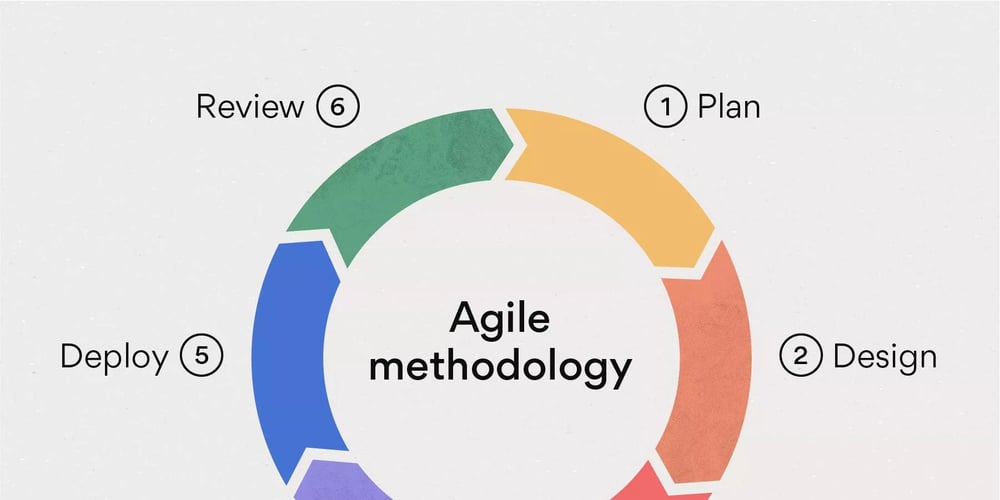Why Python Reigns Supreme in Web Scraping: A Developer’s Perspective
In the fast-evolving world of web scraping, Python has emerged as the undisputed champion. From startups to tech giants, developers rely on Python to extract, process, and analyze web data at scale. But what makes Python the go-to language for scraping? Let’s unpack the technical, practical, and ecosystem-driven reasons behind Python’s dominance in this space. 1. Simplicity and Readability Python’s clean, intuitive syntax lowers the barrier to entry for both beginners and experts. Unlike verbose languages like Java or C++, Python allows developers to focus on logic rather than boilerplate code. Example: Compare fetching a webpage in Python vs. Java: # Python (using Requests) import requests response = requests.get("https://example.com") print(response.text) // Java (using HttpClient) HttpClient client = HttpClient.newHttpClient(); HttpRequest request = HttpRequest.newBuilder() .uri(URI.create("https://example.com")) .build(); HttpResponse response = client.send(request, BodyHandlers.ofString()); System.out.println(response.body()); Python’s brevity accelerates development cycles, making it ideal for iterative scraping tasks. 2. Rich Ecosystem of Libraries Python boasts a treasure trove of purpose-built libraries for every scraping need: Library Use Case Requests Simple HTTP requests. Beautiful Soup Parsing HTML/XML. Scrapy Large-scale crawling (with built-in async). Selenium Automating JavaScript-heavy sites. Playwright Modern cross-browser automation. Pandas Cleaning, analyzing, and storing data. Example: A minimal scraper with Beautiful Soup: from bs4 import BeautifulSoup import requests url = "https://news.ycombinator.com" response = requests.get(url) soup = BeautifulSoup(response.text, "html.parser") titles = [tag.text for tag in soup.select(".titleline a")] print(titles) 3. Handling Dynamic Content Modern websites rely heavily on JavaScript for rendering. Python’s integration with headless browsers like Selenium and Playwright enables developers to: Click buttons, submit forms, and scroll. Wait for AJAX/XHR responses. Capture screenshots or PDFs. Example: Automating a login with Selenium: from selenium import webdriver from selenium.webdriver.common.by import By driver = webdriver.Chrome() driver.get("https://linkedin.com/login") # Fill credentials driver.find_element(By.ID, "username").send_keys("user@test.com") driver.find_element(By.ID, "password").send_keys("secure_password") driver.find_element(By.XPATH, "//button[@type='submit']").click() # Wait for dashboard to load dashboard = driver.find_element(By.CLASS_NAME, "feed-identity-module") print("Logged in successfully!") 4. Scalability and Integration Python scales seamlessly from small scripts to enterprise-grade systems: Scrapy: Build distributed crawlers with built-in middleware, pipelines, and throttling. Celery/RQ: Orchestrate asynchronous tasks. Docker/Kubernetes: Deploy scrapers in cloud environments. Integration: Python’s data stack (Pandas, NumPy, SQLAlchemy) allows scraped data to flow directly into analytics pipelines, databases, or machine learning models. 5. Community and Resources Python’s massive community ensures: Quick Troubleshooting: Solutions to common issues (CAPTCHAs, IP bans) are a Google search away. Pre-built Solutions: GitHub repositories for niche use cases (e.g., scraping Instagram, Shopify). Education: Free tutorials (Real Python, freeCodeCamp) and paid courses (Udemy) abound. 6. Ethical and Legal Tooling Python libraries often include features to promote ethical scraping: Respect robots.txt: Use robotparser to check permissions. Rate Limiting: Add delays with time.sleep() or Scrapy’s AUTOTHROTTLE. Proxy Rotation: Integrate services like ScrapingBee or Bright Data. 7. AI and Future-Readiness Python’s dominance in AI/ML pairs perfectly with scraping: LLM Integration: Use OpenAI or LangChain to parse unstructured text. Auto-Scraping: Train models to auto-detect DOM structures (e.g., AutoScraper). Data Labeling: Scraped data fuels computer vision/NLP pipelines. Python vs. Alternatives Language Pros Cons JavaScript Native browser automation (Puppeteer). Callback hell, fragmented tools. Ruby Elegant syntax (Nokogiri for parsing). Smaller community, slower adoption. Go High performance, concurrency. Steeper learning curve. Why Python Wins: Balanced blend of simplicity, power, and ecosystem. Real-World Applications E-commerce: Track prices, monitor competitors (e.g., Amazon, eBay). Finance: Scrape stock data, SEC filings, or crypto trends. Research: Aggregate academic papers or clinical trial data. SEO: Audit websites for broken links or keyword rankings. Conclusion Python’s versatility, library ecosystem, and communi

In the fast-evolving world of web scraping, Python has emerged as the undisputed champion. From startups to tech giants, developers rely on Python to extract, process, and analyze web data at scale. But what makes Python the go-to language for scraping? Let’s unpack the technical, practical, and ecosystem-driven reasons behind Python’s dominance in this space.
1. Simplicity and Readability
Python’s clean, intuitive syntax lowers the barrier to entry for both beginners and experts. Unlike verbose languages like Java or C++, Python allows developers to focus on logic rather than boilerplate code.
Example: Compare fetching a webpage in Python vs. Java:
# Python (using Requests)
import requests
response = requests.get("https://example.com")
print(response.text)
// Java (using HttpClient)
HttpClient client = HttpClient.newHttpClient();
HttpRequest request = HttpRequest.newBuilder()
.uri(URI.create("https://example.com"))
.build();
HttpResponse<String> response = client.send(request, BodyHandlers.ofString());
System.out.println(response.body());
Python’s brevity accelerates development cycles, making it ideal for iterative scraping tasks.
2. Rich Ecosystem of Libraries
Python boasts a treasure trove of purpose-built libraries for every scraping need:
| Library | Use Case |
|---|---|
| Requests | Simple HTTP requests. |
| Beautiful Soup | Parsing HTML/XML. |
| Scrapy | Large-scale crawling (with built-in async). |
| Selenium | Automating JavaScript-heavy sites. |
| Playwright | Modern cross-browser automation. |
| Pandas | Cleaning, analyzing, and storing data. |
Example: A minimal scraper with Beautiful Soup:
from bs4 import BeautifulSoup
import requests
url = "https://news.ycombinator.com"
response = requests.get(url)
soup = BeautifulSoup(response.text, "html.parser")
titles = [tag.text for tag in soup.select(".titleline a")]
print(titles)
3. Handling Dynamic Content
Modern websites rely heavily on JavaScript for rendering. Python’s integration with headless browsers like Selenium and Playwright enables developers to:
- Click buttons, submit forms, and scroll.
- Wait for AJAX/XHR responses.
- Capture screenshots or PDFs.
Example: Automating a login with Selenium:
from selenium import webdriver
from selenium.webdriver.common.by import By
driver = webdriver.Chrome()
driver.get("https://linkedin.com/login")
# Fill credentials
driver.find_element(By.ID, "username").send_keys("user@test.com")
driver.find_element(By.ID, "password").send_keys("secure_password")
driver.find_element(By.XPATH, "//button[@type='submit']").click()
# Wait for dashboard to load
dashboard = driver.find_element(By.CLASS_NAME, "feed-identity-module")
print("Logged in successfully!")
4. Scalability and Integration
Python scales seamlessly from small scripts to enterprise-grade systems:
- Scrapy: Build distributed crawlers with built-in middleware, pipelines, and throttling.
- Celery/RQ: Orchestrate asynchronous tasks.
- Docker/Kubernetes: Deploy scrapers in cloud environments.
Integration: Python’s data stack (Pandas, NumPy, SQLAlchemy) allows scraped data to flow directly into analytics pipelines, databases, or machine learning models.
5. Community and Resources
Python’s massive community ensures:
- Quick Troubleshooting: Solutions to common issues (CAPTCHAs, IP bans) are a Google search away.
- Pre-built Solutions: GitHub repositories for niche use cases (e.g., scraping Instagram, Shopify).
- Education: Free tutorials (Real Python, freeCodeCamp) and paid courses (Udemy) abound.
6. Ethical and Legal Tooling
Python libraries often include features to promote ethical scraping:
-
Respect
robots.txt: Userobotparserto check permissions. -
Rate Limiting: Add delays with
time.sleep()or Scrapy’sAUTOTHROTTLE. - Proxy Rotation: Integrate services like ScrapingBee or Bright Data.
7. AI and Future-Readiness
Python’s dominance in AI/ML pairs perfectly with scraping:
- LLM Integration: Use OpenAI or LangChain to parse unstructured text.
- Auto-Scraping: Train models to auto-detect DOM structures (e.g., AutoScraper).
- Data Labeling: Scraped data fuels computer vision/NLP pipelines.
Python vs. Alternatives
| Language | Pros | Cons |
|---|---|---|
| JavaScript | Native browser automation (Puppeteer). | Callback hell, fragmented tools. |
| Ruby | Elegant syntax (Nokogiri for parsing). | Smaller community, slower adoption. |
| Go | High performance, concurrency. | Steeper learning curve. |
Why Python Wins: Balanced blend of simplicity, power, and ecosystem.
Real-World Applications
- E-commerce: Track prices, monitor competitors (e.g., Amazon, eBay).
- Finance: Scrape stock data, SEC filings, or crypto trends.
- Research: Aggregate academic papers or clinical trial data.
- SEO: Audit websites for broken links or keyword rankings.
Conclusion
Python’s versatility, library ecosystem, and community support make it the ultimate choice for web scraping. Whether you’re building a simple price tracker or a distributed scraping farm, Python provides the tools to get the job done efficiently and ethically.
Next Steps:
- Start with Requests + Beautiful Soup for static sites.
- Graduate to Scrapy or Selenium for complex projects.
- Explore Playwright for cutting-edge browser automation.
The web is your dataset—Python is the key to unlocking it.
Pro Tip: Always pair Python with proxies and ethical practices to avoid blocks. Happy scraping!









































































































































































![[The AI Show Episode 142]: ChatGPT’s New Image Generator, Studio Ghibli Craze and Backlash, Gemini 2.5, OpenAI Academy, 4o Updates, Vibe Marketing & xAI Acquires X](https://www.marketingaiinstitute.com/hubfs/ep%20142%20cover.png)


























































































































![[FREE EBOOKS] The Kubernetes Bible, The Ultimate Linux Shell Scripting Guide & Four More Best Selling Titles](https://www.javacodegeeks.com/wp-content/uploads/2012/12/jcg-logo.jpg)



![From drop-out to software architect with Jason Lengstorf [Podcast #167]](https://cdn.hashnode.com/res/hashnode/image/upload/v1743796461357/f3d19cd7-e6f5-4d7c-8bfc-eb974bc8da68.png?#)







































































































.png?#)




.jpg?#)




















 (1).webp?#)











_Christophe_Coat_Alamy.jpg?#)








































































































![Rapidus in Talks With Apple as It Accelerates Toward 2nm Chip Production [Report]](https://www.iclarified.com/images/news/96937/96937/96937-640.jpg)








































































































































